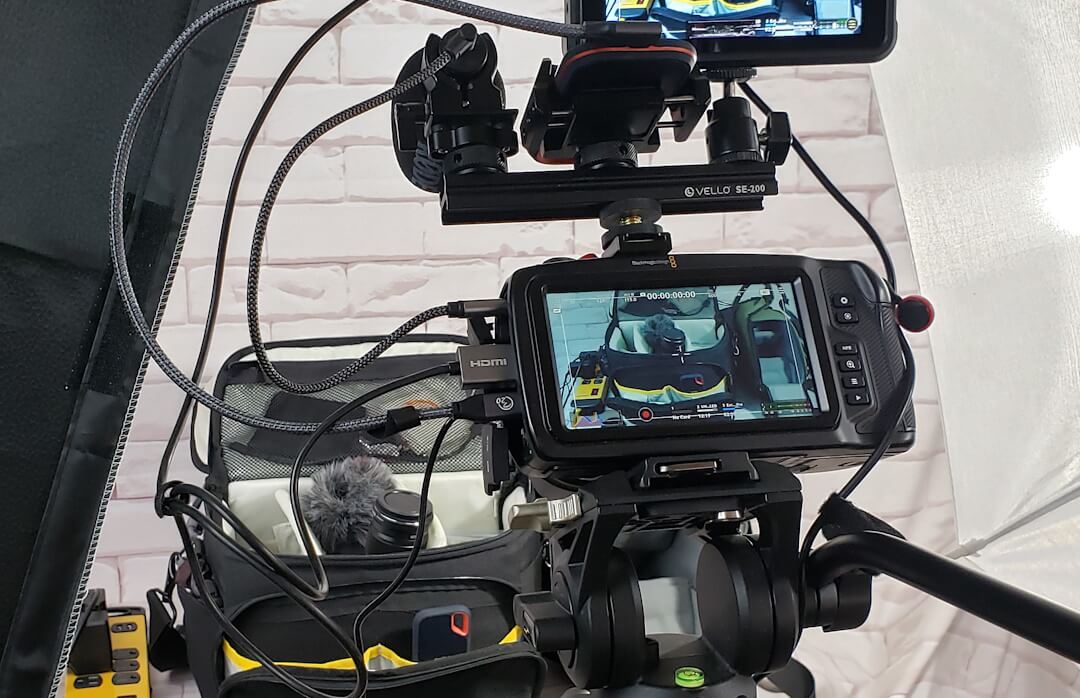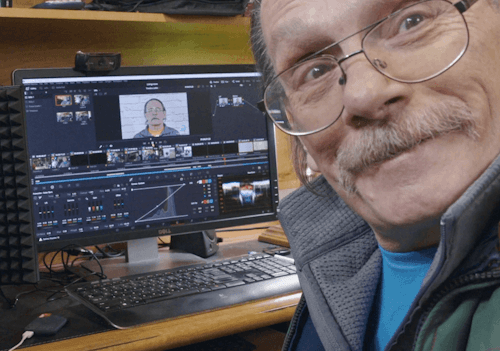Cinematographers Checklist For High Quality Production Value

Pre-Production Checklist
- Discuss the Project: Schedule a meeting with the Producer and Director to understand the vision and goals of the project. You may want to create storyboards to help personel grasp the concept. Establish a schedule of events for the day including when lunch break is.
- Write a script if needed. Depending on the type of shoot you are doing a script may be a guiding document everyone can understand. A script is essential for spokesperson narration and scene coordination. While no script is needed for off the cuff shoots. If you have any narration planned, a script will keep your shoot organized.
- Scout Locations: Visit the locations to plan your lighting and camera setups. Make notes of what is available and what you want to add. Even small things like a power cord can make a difference. Take still photos of the scene so you can plan shots, if desired.
- Create a Shot List: Work with the director to detail each shot needed. This step becomes increasingly more important with the size of the production. Taking notes can be helpful in production and post production phases.
- Plan Lighting: Decide on the lighting setup for each shot. Even when shooting outdoors lighting is important. I cannot emphasize enough how big a difference control of lighting affects your production value.
- Test Equipment: Ensure all cameras, lenses, and lighting are in good working condition. Check tripods, camera aaccessories and that all your electronics works properly. Repair or replace anything that is not working.
- Charge Batteries: Make sure all batteries are fully charged. Check power supplies or power generators are working. Power consumption and availablility are primary concerns at any location. Be prepared for power outages.
- Pack Equipment: Gather all necessary equipment, including cameras, lenses, lighting, and accessories. Make sure all camera bags, cases and zippers or packaging is closed and secured. Last thing you need on a video shoot is an equipment loss due to an open bag or lost case during transport.
- Prepare a Backup Plan: Have spare equipment and alternative locations ready. Especially recording devices like SD cards or SSD drives. Nothing worse than running out of recording time during a shoot.
- Hire Crew: If needed, Hire additional crew members like a focus puller or gaffer. Never mind, if you are a one man show, then prepare to fill any role as needed.

This next video shows what can be done with a turntable. Check it out...
Production Checklist
- Communicate with the Team: If you have a crew a pre-production meeting should be scheduled. Ensure everyone knows their roles and responsibilities. Brief cast and crew on the shots to be accomplished that day. Have coffee and doughnuts or pastries available. This gesture will energize the crew to the tasks ahead.
- Check Equipment: Continuously check all equipment to ensure it's functioning properly. Do a test recording and playback. Check audio and video levels, lighting and electronics performance.
- Monitor Audio: Pay attention to audio levels and ensure sound is being captured correctly. Make sure microphones are placed correctly and working.
- Communicate with the Director: Stay in constant communication to capture the shots needed. Skip this step if you are a one man show. Otherwise this seems obvious but is surprisingly effective for excellent quality.
- Adjust Lighting: Make any neccessary adjustments to lighting during the shoot. Sometimes taking still photos of your set just so you can have a reference of your lighting setup.
- Camera Check: Test your setup prior to recording by recording a short test and playing it back. Once your setup and equipment are primed you can shoot. Then, roll recording and create high production value content.
- Monitor Footage: Regularly review footage to ensure quality and consistency. Seems obvious but isn't. Take notes if needed. good notes will help the editor and colorist understand what footage is in and what footage is out.
Post-Production - Cinematographers Checklist

- Transfer Footage: Transfer all footage to your computer for editing. (Or not.) If you use a SD card or SSD Drive for recording you can simply connect them to your computer. That way you won't need to use your computer for duplicate storage. This only works well with super fast SD cards and drives. So get good, fast ones.
- Backup Files: if required. Create backups of all footage and project files. Again this could be unnecessary and save space on your computer if you record on fast SD cards or drives and use those as source files in the editing process. Otherwise do this step as specified.
- Edit Footage: Use editing software to compile and edit the footage. Do a rough cut first with just the footage. Send that to your colorist for color grading.
- Color Grading: Adjust colors to achieve the desired look. I use DaVinci Resolve for this task. Adjust exposure, white balance, contrast and color levels.This is a good time to solidify the look and feel of the project.
- Edit final cut Adjust timing and pace of final output. Sync sound if needed. Add titles and subtitles if needed. Review all notes collected during production and match producers concept and vision.
- Add Special Effects: Incorporate any special effects or transitions. This is where you polish the final cut. Do not overdo this step as over polishing is as bad as under.
- Sound Design: Add sound effects, music, and adjust audio levels. Adjust audio mix to match pace of imagery.
- Final Review: Watch the final cut to ensure everything is polished and cohesive. Make adjustment as neccessary.
- Export Final Product: Render the final project in the desired format. Review finished video before publishing. Publish to your favorite broadcast, internet or social media platform.
The Cinematographers Checklist should help you stay organized and ensure you don't miss any important steps during your production. Review your checklist before each production will ensure you get high quality production values.
Looking for video creation help? Try my fiverr service for professional video creation...
Editors Note: As I journey through life certain memories spark my imagination. In those moments I wish I had a camera to capture it. Meanwhile, I can prepare to be ready for the next time I want a camera in my hands!
I started this article with an idea to prepare for my next video production. Then I used the help of AI to make a short item list. Then I re-wrote the list into my own words for this article, with added personality. Then, I tried it out in my studio. It helped!
Tim
Related Articles
BWT-Videos - video and animation creation.
Add Dynamic Captions - to your next video project.
The 5 C's of videography - tips for video reation.
3d Animated Avatars - spokesperson videos.
Video Editing - where to get video editing done the right way.
Home : Video Creation Tips Category : Cinematographers Checklist
61 W. Annabelle Ave. Hazel Park,
MI. 48030-1103, U.S.A.
telephone: (248)546-0374
email: support@best-website-tools.com
© Copyright 2007-2025 All rights Reserved.
Sun: closed
Mon-Fri: 9:00AM to 6:00PM
Sat: 9AM-12:00PM
Closed Holidays
